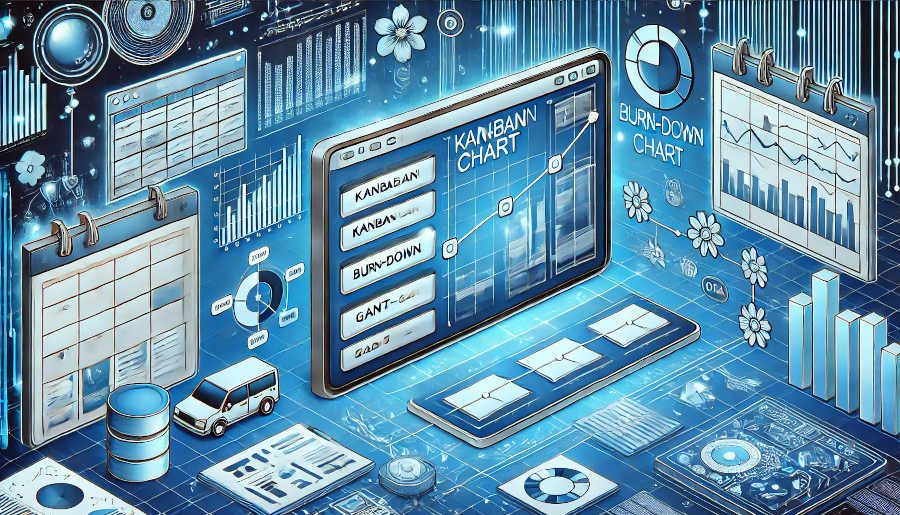Importance of Quality Management
Quality management is essential for several reasons. Firstly, it ensures that the project's deliverables are consistent and meet the required standards. This consistency is crucial for maintaining stakeholder satisfaction and trust. Secondly, quality management helps in identifying and mitigating risks early in the project lifecycle. By doing so, it prevents costly rework and delays. Lastly, a robust quality management system can enhance the project team's morale, as team members are confident that their work meets high standards. This confidence can lead to better performance and higher job satisfaction.
Quality management also plays a vital role in maintaining the project's reputation. In today's competitive market, delivering high-quality products or services can set a project apart from its competitors. It can lead to repeat business and positive word-of-mouth, which are invaluable in sustaining long-term success. Moreover, quality management can reduce the overall project costs by minimizing the need for corrective actions and improving efficiency.
In summary, quality management is not just a process but a philosophy that permeates every aspect of the project. It ensures that the project not only meets the required standards but also exceeds stakeholder expectations, leading to long-term success and sustainability.
Key Elements of Quality Management
The key elements of quality management include planning, assurance, control, and continuous improvement. Quality planning involves setting the quality objectives and determining the processes necessary to deliver high-quality outcomes. This phase is crucial as it lays the foundation for the entire quality management process. It ensures that all team members understand the quality standards and the steps needed to achieve them.
Quality assurance is the next critical element. It involves a proactive approach to maintaining quality standards throughout the project. This includes regular audits, reviews, and assessments to ensure that the project is on track to meet its quality objectives. Quality assurance helps in identifying potential issues early and taking corrective actions before they escalate.
Quality control, on the other hand, is a reactive process that focuses on monitoring and measuring the project's deliverables against the established quality standards. It involves inspections, testing, and feedback mechanisms to ensure that the deliverables meet the required quality levels. Quality control is essential for identifying defects and ensuring that they are corrected before the final delivery.
Continuous improvement is the final key element. It involves a commitment to enhancing the quality management processes continually. This can be achieved through feedback loops, process reviews, and learning from past experiences. Continuous improvement ensures that the project team is always striving to improve and deliver better outcomes in future projects.
Practical Strategies for Quality Management
One practical strategy for quality management is the implementation of a Quality Management Plan (QMP). The QMP outlines the project's quality standards, processes, and procedures. It serves as a roadmap for the project team, ensuring that everyone is aligned with the quality objectives. The QMP should be detailed and comprehensive, covering all aspects of the project, from planning to execution and closure.
Another practical strategy is the use of quality tools and techniques. These include tools like Pareto analysis, cause-and-effect diagrams, and control charts. These tools help in identifying the root causes of quality issues and implementing effective solutions. For example, Pareto analysis can help in prioritizing the most critical quality issues, while cause-and-effect diagrams can assist in identifying the underlying causes of defects.
Training and development are also crucial strategies for quality management. Ensuring that the project team is well-trained and knowledgeable about quality standards and processes can significantly enhance the project's quality outcomes. Regular training sessions, workshops, and knowledge-sharing activities can help in maintaining a high level of quality awareness and competence within the team.
Challenges in Quality Management

Despite its importance, quality management can face several challenges. One common challenge is resistance to change. Implementing new quality standards and processes can be met with resistance from team members who are accustomed to the old ways. Overcoming this resistance requires effective communication, leadership, and a clear demonstration of the benefits of the new approach.
Another challenge is the lack of resources. Quality management requires time, effort, and financial resources. In projects with tight budgets and timelines, quality management can sometimes be overlooked or underfunded. To address this challenge, project managers need to prioritize quality management and allocate the necessary resources to ensure its success.
Finally, maintaining consistent quality standards across different project phases can be challenging. Each phase of the project has its unique requirements and challenges, and maintaining quality throughout can be demanding. To overcome this challenge, project managers need to establish clear quality standards and processes for each phase and ensure that they are consistently applied.
Conclusion
In conclusion, project quality management is a vital component of successful project delivery. It ensures that the project outcomes meet the required standards and exceed stakeholder expectations. The key elements of quality management, including planning, assurance, control, and continuous improvement, play a crucial role in maintaining high-quality deliverables. Practical strategies such as the implementation of a Quality Management Plan, the use of quality tools and techniques, and training and development can significantly enhance the project's quality outcomes.
However, quality management is not without its challenges. Resistance to change, lack of resources, and maintaining consistent quality standards across different project phases are common obstacles. Overcoming these challenges requires effective leadership, clear communication, and a commitment to quality.
By understanding and implementing the key elements and practical strategies of project quality management, project managers can ensure that their projects not only meet but exceed quality expectations, leading to long-term success and sustainability.
FAQ
1.What are the essential tools for quality management?
The essential tools for quality management include Pareto analysis, cause-and-effect diagrams, control charts, and flowcharts. These tools help in identifying and addressing quality issues effectively.
2.How can resistance to change in quality management be overcome?
Resistance to change can be overcome through effective communication, leadership, and a clear demonstration of the benefits of the new quality standards and processes. Engaging team members in the change process and providing adequate training can also help in reducing resistance.
3.Why is continuous improvement important in quality management?
Continuous improvement is important because it ensures that the quality management processes are continually enhanced and adapted to meet evolving project requirements. It helps in identifying areas for improvement and implementing effective solutions, leading to better project outcomes in the long run.
ARTICLE TITLE :Key elements and practical strategies of project quality management ,AUTHOR :ITpmlib

















